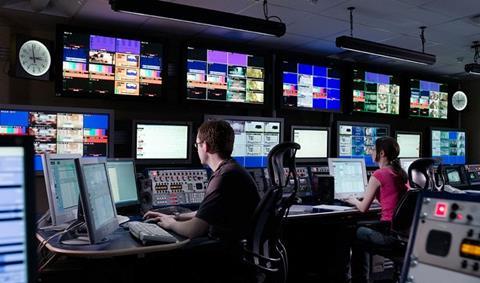How an established broadcast communications infrastructure provider is re-designing its services for the digital age


Kenelm Deen, senior product manager for TV at Arqiva, explains the challenges facing broadcasters and operators in adapting and replacing legacy services for the digital age.
The need to deliver content across multiple networks – digital terrestrial television (DTT), mobile and broadband – to multiple devices, running multiple technologies and resolutions, is creating more complexity than ever before.
Broadcasters have introduced new platforms alongside existing ones, resulting in isolated systems, infrastructure duplication and different operational characteristics. This has led to increased operational cost and complexity.
This approach isn’t sustainable and won’t deliver the operational savings or support for new commercial models, such as pop-up channels for events like the World Cup.
But with consumer demands in constant flux, how do platforms continue to evolve to meet current and as yet unknown future business demands?
Flexibility
With the adoption of standard IT infrastructure and software-defined broadcast functions, a new model is emerging, which should enable the industry to simplify platforms while providing commercial flexibility.
Broadcasters must separate applications such as encoding and multiplexing from their dedicated hardware, and instead enable them to run on standard IT hardware.
Content must also be made available over common interfaces. And finally, the end-to-end broadcast workflow should be software-defined so applications can be deployed quickly and efficiently across shared resource and taken down when no longer needed.
High Availability
While flexibility and agility are emerging requirements, high availability – the corner stone of broadcast services – is an absolute necessity if these new platforms are to deliver the nation’s favourite shows.
Switching from dedicated broadcast interfaces is no simple task. While inflexible, these interfaces provide deterministic low latency performance, which is essential for maintaining high-availability levels and picture quality.
Ethernet interfaces from 10G to 100G provide sufficient bandwidth to transport uncompressed content from SD to UHD but require additional broadcast wrappers to do so. This includes the SMPTE standards, which have recently enabled uncompressed media transport over IP and thereby removed the last blocker to an all-IP platform.
While still in their infancy, these new protocols alongside others, promise to reduce complexity in managing content distribution.
All the components are now there, but how do you configure and deploy these software applications and ensure the network reliably delivers content in real-time? These are exactly the challenges we are investigating as we develop our next generation platforms.
Can these platforms deliver 99.999% service availability while also carrying out continuous deployment to maintain security and introduce new functionality? We are working with broadcast suppliers to develop ‘cloud-native’ applications designed for this new environment, which will enable new operating models and allow services to move between application instances with zero service impact.
Hybrid Viewing
Today’s viewers are not concerned with how their shows are delivered, only that they can watch what they want, when and how they want. In response, hybrid viewing platforms such as Freeview Play and YouView have been developed to provide seamless navigation across DTT broadcast and IP delivered services.
The ability to enhance traditional DTT services with IP services is exciting, with opportunities such as restart TV if you miss the beginning of a programme, catch-up services and personalised viewing with targeted content. We believe that hybrid services have become the norm and it is essential for broadcasters to embrace the opportunities they offer.
We believe technology now supports a transition to a world in which broadcast services are software-defined, with dynamic workflows running on standard IT infrastructure. This change brings broadcasters the agility to react to changing business needs, explore new service models, and deploy new services potentially within minutes.






























No comments yet